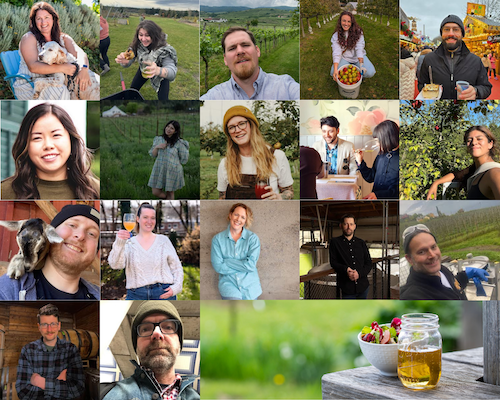What’s a winemaker to do when cool weather persists and Brix levels aren’t rising?
Spring rains delayed the grape harvest by nearly a month, jeopardizing grape maturity as summer closed and temperatures cooled. Many vineyards are seeing persistently low Brix levels, causing worries among winemakers that temperatures won’t rise enough for grapes to reach optimal sugar levels before harvest.
“Last year at this time, I was getting calls that juice had high VA [volatile acidity] levels,” says Bryan Tudhope, Founder and CEO of VA Filtration. “This year, they’re asking, ‘What are my options for fixing juice with low Brix levels? What can I do with high levels of Methoxypyrazines?’ These early calls are canaries in the coal mine. I expect the challenge for winemakers will be far-reaching unless we see sustained warmth through October.”

Calling the right moment to harvest is difficult, even in a typical year. In 2023, the deluge of spring rain followed by a wave of high heat and then early autumn rains in some areas resulted in a dilemma for winemakers. Should they harvest physiologically unripe grapes and risk methoxypyrazines’ green character dominating the wine? Should they wait a little longer and risk sugar levels going backward or early rains resulting in the fruit rotting?
Growers have been constantly adjusting their predictions for every vineyard microclimate as to whether the sugar levels will go up another 2 or 3 Brix or if it’s time to call for harvesting.
Winemaking Options for Low Sugar Levels.
“This year reminds me of 2011,” Tudhope notes. “It was also very cool, and the grapes would not hit the Brix level.” These conditions delayed harvest, but sunny days and high temperatures arrived in mid-September to speed up maturation and allow growers to begin harvesting. 2023 hasn’t been as kind so far this autumn in most areas.
Tudhope explains that there are two options for winemakers when the harvest comes in with low Brix levels.

The first is to concentrate the juice before starting fermentation. Concentration increases sugar levels through the removal of water via reverses osmosis (RO), but winemakers would have to pre-filter. This approach works well for white juice, which is easier to pre-filter to allow RO to work.
Unfortunately, filtration is very difficult for red wines because they ferment on the skin. Winemakers could take a portion of the juice, filter it and try to concentrate that to a much, much higher Brix level. But the pressure and equipment required to accomplish this is very specialized, and it becomes so slow that it’s almost not worth it.
Instead, Tudhope recommends option two: Wait until the wine finishes fermentation. VA Filtration can then bring in its specialized equipment when it’s dry and concentrate the wine using an ultra-filtration (UF) process. Although using RO would be ideal, this process and nanofiltration are not legal. UF is the only concentration technique that the TTB recognizes as a process to concentrate color in wine.
The UF process separates the wine into high-color and low-color fractions using membranes that separate the higher molecular weight at a 500 cut-off. Winemakers can then use the high-color fraction to achieve some of the flavors that may have been lacking in the thinner juice. Winemakers can run a bench test to predetermine the fractions needed to attain the desired alcohol level. The 5%–15% lost to the low-color fraction can run with the lees or into a separate program.
Addressing Alcohol Content and Green Taint
While winemakers can manage the flavor and mouth feel with concentration trials, they may also need to make adjustments to the alcohol content by adding high-proof spirits. Tudhope advises using a neutral distillate instead of adding a high-sugar grape juice concentrate on the front end for higher end wines. VA Filtration offers high-proof grape spirits for wineries.
A possible challenge is the presence of methoxypyrazine-type aromas that originate from the underripe fruit and can overpower the other flavors. VA Filtration can effectively eliminate these aromas as well as other undesirable compounds without affecting the positive attributes of the wine, usually in one or two cycles.
Tudhope adds, “A year like this brings out the best in winemakers! The quality needs to match other vintages, even though you have year to year weather variances. Winemakers need to dig deep into their toolbox to make the best wine they can. We can provide some of those tools.”
Younger winemakers may be facing these complex decisions for the first time, and even experienced winemakers may need expert help. Tudhope and VA Filtration are there to provide that expertise. You can reach him at bryan@vafiltration.com or visit VA Filtration at WIN Expo booth 513.
| Send Me Info |







